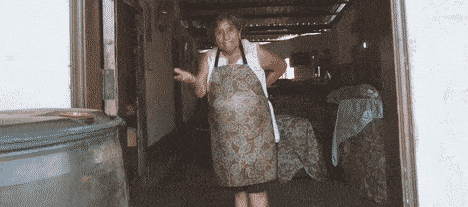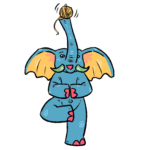A Deep Breathing Lesson Plan For Kids & Adults
Breathing. We all do it. If you breathe every day, this breathing lesson plan is for you.
Deep breathing exercises are a lifelong learning lesson. Go on an inner and global learning journey to practice being mindful and calm with this breathing lesson plan for kids.
Being able to breathe deeply helps us breathe life and love into our world.
WE are the mindful guides of our lifelong learning journeys.

A Self-Guided Deep Breathing Lesson Plan For You: Practice Mindful Breathing With Self, Others & Our World
Notes: Explore the Humanity & Belonging Unit and Teaching Unit to further explore important concepts like empathy, judgment, bias, mindfulness, and more. Build your empathy and curiosity muscles with this lifelong learning lesson.
For learning that lasts a lifetime, repeat this deep breathing lesson plan often with time to reflect and repeat often with new Learning Journeys. Breathing mindfully is a lifelong practice. Enter the breathing lesson plan.
1) ASK YOURSELF A DEEP BREATHING QUESTION
“How much do I breathe in a day? How much do I breathe in a minute? How much does breathing matter in my life?”
Close your eyes and take a big deep breath through your nose. As you breathe in, count how many seconds it takes you to take your usual breathe in. As you breathe out, count how many seconds it takes for you to fully breathe out. Do this three times. Okay, now this is the part where you close your eyes and actually do this. Remember to open your eyes after!
Write down how long it took you to breathe in and out each time, and write down how the breathing feels as well.
2) BREATHE DEEPER
Let’s try another way now. This time, breathe in slowly and count to 6 as you inhale. As you reach 6 seconds, breathe out slowly and count to 6 again. Do this 3 times with your eyes closed. If you’re feeling extra ready, do this 10 times. Ready? Let’s do it.
Reflect on this deep breathing question: “How does this deeper breathing feel? As I breathe in, what do I notice? As I breathe out, what do I wonder?” Reflect on this however you are most comfortable — you can write notes, record audio, create a drawing or sketch, create a movement or dance to think about this, meditate with the memories you are thinking of, or reflect in any other way you feel is helpful to you.
3) BIG PICTURE DEEP BREATHING
“What do I notice about my breathing in part 1 and in part 2 of our breathing lesson? Was there any difference in how long I breathe for? Was there any difference in how I feel when I breathe for each length of time?”
Meaningful math time! What was the difference in time between your breathing in part one and in part two? How many breaths will you take in a minute if you breathe as you were in part one? What about if you breathe deep as you were in part two, for 6 seconds in and 6 seconds out?
4) BREATHE WITH OTHERS
Let’s learn about others who are thinking about breathing, mindfulness, meditation, yoga, and more! Search for these words on the stories page to choose a first story to start with.
As you engage with these stories (or any story on the stories page!), reflect on where mindful and deep breathing may play a role in this person’s life. How might breathing deep be helpful in _____’s life? How does our breathing connect to our heart and our mind? What does ____ have to share about this connection?
Remember: breathing is essential, whether we think about it or not! And we can all learn alongside one another as we become more mindful of our breathing. Let’s learn how to be mindful together. You may also enjoy this beautiful art and song as you reflect on your breathing.
START A MINDFUL DEEP BREATHING JOURNAL
As you engage in your day, try the deep breathing we did in part two of today’s breathing lesson plan. It’s up to you for how long you try. If you’re feeling ready to do so, try to do 10 deep breaths in and out, focused on breathing through your nose and focused on your breath.
As you practice this deep breathing, journal about what led you to feel like doing the breathing exercise when you did. Were you feeling a little stressed or anxious? Were you feeling a little excited and hyper? Were you preparing to give a big presentation? Were you trying to get ready to focus? Were you trying to fall asleep? Were you starting to feel angry towards something or someone?
There are SO many moments in our lives where this kind of breathing can be deeply meaningful and healthy for us all. Try to take notes on when you find yourself breathing deep, and see if you start to notice any patterns over time.
Deep breathing is a lifelong practice and a lifelong learning journey. Being mindful is not just something we are or aren’t — mindfulness is not something that we have or don’t have.
As you journal on your breathing, ask others questions about all of this. See how others engage in mindful breathing. We can learn from one another!
If we all make deep breathing a conversation in the day to day of our lives, it will become a practice over time that lasts for a lifetime! Loving learning for life is the goal, right?
Wordless Videos & Lesson Plans Breathe Life Into Learning
Practicing mindfulness and deep breathing exercises isn’t a one time thing, and it doesn’t end after this breathing lesson plan. Practicing mindful living and breathing is something we can do for life!

Read more here about why our videos don’t have words: no prescribed narrative, no language barrier! Lesson plans that help early childhood learners prioritize curiosity and understanding over judgment and bias from an early age. Through wordless stories — browse below!

